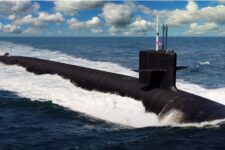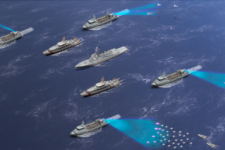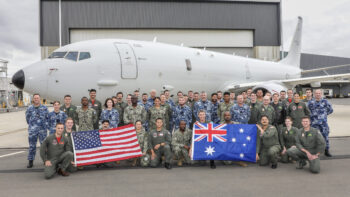WASHINGTON: The Navy has begun a critical phase in its quest for a revolutionary weapon that could reach out and touch someone with massive force at more than 100 miles, without using an ounce of gun powder or rocket fuel.
The Navy has fired six test shots with the first of two industry prototypes of an electromagnetic rail gun, a weapon that uses a massive surge of electricity to propel a 40-pound hunk of metal to seven times the speed of sound in an instant, the Office of Naval Research (ONR) said today. The device produced by BAE Systems already has demonstrated a power level strong enough to fire a projectile 50 nautical miles, Roger Ellis, EM Rail gun program manager at ONR, said.
The BAE gun, and one produced by General Atomics that is to be delivered in April to the Navy weapons testing facility in Dahlgren, Va., are expected to be powerful enough to send projectiles 100 nautical miles, Ellis said in a telephone conference call.
That range would compare to the 13 mile reach for the standard five-inch naval cannon on most U.S. warships. Those guns range can be nearly doubled with rocket-boosted rounds.
instead of gunpowder, rail gun rounds are propelled through a series of electromagnets lining the inside of the gun’s barrel. The charge from the electromagnets propel the round — likely the standard 155mm shell fielded by American destroyers — through the barrel at upwards of Mach 7, once fully developed.
Ellis said the BAE weapon is “a significant step beyond” the massive experimental rail gun ONR has been working on since 2005. While the ONR device was the size of a bus, the BAE gun “is something more tactical in nature… something like you could put on a ship,” he said.
The two industry-built guns will conduct extensive trials through 2017 to see how many of the powerful discharges they can withstand before replacing the barrels and if they have enough thermal management and cooling to allow 10 shots a minute, Ellis said.
During that period, ONR will be conducting parallel experiments to develop batteries and pulse-power systems that could provide the one million amps of electrical power needed to reach 100 miles time after time.
A successful rail gun could give Navy warships unmatched power to support landing forces well inland, or to defend themselves from cruise or ballistic missiles or enemy ships, Ellis said. The Navy hopes to have an effective weapon for use on a ship by 2025, or earlier if possible, he said.
ONR has spent $240 million on the first phase of the rail gun development and expects to have about the same amount for phase two, Ellis said.
Tom Ham, director of General Atomics rail gun program, said the company has spent about $20 million of its own funds to develop its prototype and a smaller version, called Blitzer, which it has been testing.
Amir Chabiki, program manager for BAE’s rail gun effort, said it will continue to invest its own funds in the program, but did not provide a figure.
Navy is down $1B in munitions from ops in Red Sea, says SECNAV
The dollar figure from the secretary comes as Speaker of the House Rep. Mike Johnson said he is ready to bring the supplemental funding bill the Navy needs passed to the floor for a vote.


























